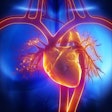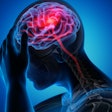
Early research on phantoms and cadavers has shown that photon-counting detectors have the potential to replicate, if not surpass, the image quality of conventional CT scanners at a considerably lower radiation dose because of their high signal-to-noise ratio.
Seeking to build on this prior work, Dr. David Bartlett and colleagues from the Mayo Clinic in Rochester, MN, acquired photon-counting chest CT scans of 22 patients at their institution. They set the photon-counting CT scanner to "sharp" mode, which provided a 150-micron pixel size, and also reconstructed the resulting scans with a large image matrix (1024 x 1024).
Compared with the 350-micron pixel size and 512 x 512-matrix size of conventional CT, photon-counting CT offered better visualization of patient airways. The two chest radiologists who read the scans reported statistically significant improvements in their ability to identify details in the lungs, including small bronchi, nodules, and bronchial walls.
"The results of this study demonstrated the potential benefit of high-resolution photon-counting chest CT, particularly in assessing airway diseases," Bartlett told AuntMinnie.com. "The data also suggest that the photon-counting CT system offers benefits in visualizing other pathologies, such as fibrosis, honeycombing, and emphysema."
This paper received a Roadie 2018 award for the most popular abstract by page views in this Road to RSNA section.



















